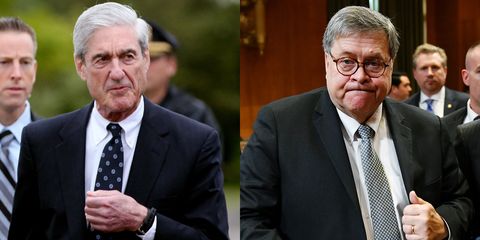Amazing Musicians
April 15, 2019
Incredible!!! Does anyone know who this man is?
Incredible!!! Does anyone know who this man is? ❤️
Posted by Amazing Musicians on Monday, April 15, 2019
Read About The Tarbaby Story under the Category: About the Tarbaby Blog
April 15, 2019
Incredible!!! Does anyone know who this man is?
Incredible!!! Does anyone know who this man is? ❤️
Posted by Amazing Musicians on Monday, April 15, 2019
April 22, 2019
According to United Nations experts, the planet has until 2030 to stem catastrophic climate change. CNN climate change correspondent Bill Weir joins Full Circle to discuss his travels all around the world looking at the causes of, and solutions to, climate change.
Posted by CNN on Monday, April 22, 2019

When the United Nations Intergovernmental Panel on Climate Change (IPCC) released its dire report in October warning of humanity’s fast-approaching reckoning with global warming, one factor adding to the urgency was a new estimate about how much additional carbon dioxide was being added to the atmosphere as a result of the warming of Arctic permafrost.
With rising Arctic temperatures setting free a vast amount of carbon previously locked beneath permafrost, the additional greenhouse gases released into the atmosphere would speed up warming, the report concluded — and that, in turn, would further melt the permafrost.
It is “feedback loops” like that one that make climate change unpredictable and represent a threat of global warming spiraling out of control.
“It’s already begun,” Thomas Crowther, professor in the Department of Environmental Systems Science of ETH Zurich, told Yahoo News. “The feedback is in process.”
Crowther estimates that carbon dioxide and methane emissions from thawing soils are “accelerating climate change about 12 to 15 percent at the moment,” and said past IPCC reports that left out the feedback “were way more optimistic than they should have been.”
Almost every scientist studying the effects of climate change is worried about the extent to which feedback loops will hasten global warming. One of the most serious concerns is the “albedo effect,” the amount of the sun’s radiation the planet reflects back into space, mostly from the polar ice sheets. The warming that has already occurred has begun melting the ice caps, leaving the relatively dark ocean and land exposed to absorb solar radiation — further warming the planet and leading to more ice melt.
“The impact that it has on making the earth darker by removing all the snow and ice is estimated by some to be 25 to 40 percent of the warming that we’ve experienced,” Jennifer Francis, research professor at Rutgers University’s Department of Marine and Coastal Sciences, told Yahoo News. “In other words, global warming is that much worse. There’s a lot of ways these things are totaled all together.”
Feedback loops are not a root cause of the climate change problem, but they make the problem that much worse. When climatologists began seriously studying global warming in the 1970’s, there was some doubt about how the feedback loops would operate. Scientists theorized there might also be negative feedback loops, which would slow global warming — for instance, by increasing cloud cover. But so far it has all gone in the opposite — wrong — direction.

“I’m not optimistic. It’s not just because of those feedbacks, it’s because we’ve already put so much carbon dioxide into the atmosphere and that carbon dioxide lasts a very long time,” Francis said. “A molecule of carbon dioxide, on average, lasts about 100 years in the atmosphere. So, we haven’t yet felt the impacts of the carbon dioxide that we’ve already put in the atmosphere. Even not thinking about feedbacks, we’re already got a lot more climate change built into the system just because it takes awhile for the climate system to adjust itself to this new level of greenhouse gases in the atmosphere. All the feedback that [happens is] just making that response even bigger than it would be otherwise.”
Francis has been researching how rising Arctic temperatures have been weakening the jet stream, causing shifts in weather and ocean current patterns that, in yet another feedback loop, warm the earth and further destabilize the jet stream.
“What we’re seeing is that the Arctic is warming much faster than the planet is farther south, making that north-south temperature difference much smaller and so there’s less of that fuel driving the jet stream wind,” Francis said. “That should cause the jet stream to take more of these big north-south swings. And the reason that’s important is because those waves in the jet stream are actually what create high- and low-pressure systems that we see on a weather map on TV and when you get those really big waves in the jet stream, they tend to move much more slowly, so those highs and lows we see on a weather map also tend to move much more slowly and so the weather conditions we see on the surface associated with those weather systems are much more persistent.”
Persistent weather patterns, such as periods of rain or drought lasting months, can have potentially devastating consequences, Francis said.
Harold Wanless, director of the University of Miami’s geological sciences department and a leading expert on sea level rise, has studied the rate at which the oceans have risen and retreated over millennia. He fears that a variety of feedback loops will contribute to a dramatic increase in sea level in the coming decades.
“My work on ancient climate shows we have these rapid pulses of rise that are rather dramatic, up to 10 meters of sea level rise certainly within a century, and that’s a really rapid disintegration of ice,” Wanless said. “We’re just seeing the beginning of ice melt and the beginning of the warming of the waters reaching up to the Arctic, in what is most certainly going to be the beginning of one of these rapid pulses.”

To Wanless, the evidence is clear that we’ve already reached a tipping point when it comes to the cascading impacts of climate change on sea level rise.
“Once you start adding up these different feedbacks, because that’s the only thing we have to go on in the modern era, well, there are all these things that are speeding up ice melt, some of which we’re just becoming aware of, like the collapse of the high ice sheets. We’re just trying to figure out how fast and how dramatic that will be,” Wanless says. “A lot of them work together. The warm water getting in under the outlet fjords of Greenland and Antarctica that ends up detaching the ice from the substrate and once that happens, you can have this sort of automatic fracturing of the detached ice like a stack of books starting to splay out off a table.”
It’s sobering to realize the extent to which the planet’s ecosystem is interconnected. For years, relatively little was known about the vital role the Arctic played in keeping the world stable. As the permafrost has begun to thaw, however, the global ramifications have become unavoidable.
“The permafrost acts like a giant freezer. The reason we have freezers in our kitchen is you put organic carbon in the form of food in your freezer and it doesn’t decompose,” said Charles Koven, research scientist at Lawrence Berkeley National Laboratory. “The same thing happens in these Arctic ecosystems. Plants grow and then die and form organic layers, kind of like compost on the surface of the soil and then over time, that carbon gets mixed down deeper into the soil where it gets locked into these deeper layers where it gets frozen and can stay for thousands of years.”
Koven is the author of a 2015 study that found that every 1 degree Celsius of warming releases from the permafrost the equivalent of 1.5 to two years of human-generated global carbon dioxide emissions.
“When you have warming, it causes the layer of soil that thaws every summer to thaw a bit deeper. It’s like taking stuff that’s been in your freezer and putting it into your fridge. It doesn’t last as long and it decomposes, and then you end up releasing greenhouse gases, carbon dioxide and methane.”
Yet Koven stressed that emissions from thawing permafrost were not, in and of themselves, necessarily catastrophic.
“The carbon that’s released from the permafrost isn’t such a strong feedback loop,” Koven said. “It’s more just that because you get this additional amount of carbon in the atmosphere with every additional bit of warming, that makes it that much more difficult to meet the kinds of climate targets that we’d like to.”

Roisin Commane, assistant professor of Earth and Environmental Sciences at Columbia University, has also been studying the thawing permafrost and was the lead author on the first study to show that Alaskan tundra was now a net emitter of carbon dioxide.
“Christmas Day last year the North Pole wasn’t frozen. The sea ice isn’t freezing, the soils aren’t freezing,” Commane told Yahoo News. “This past year, 2017-2018, a lot of Alaska’s North Slope and into Siberia never froze through. They had a very early snow, which provided an insulating layer and those soils never froze and the amount of CO2 and methane coming out was quite high.”
Unlike Wanless, who has witnessed firsthand the deterioration of the ice sheet in Greenland over decades, Commane has only recently begun traveling to the Arctic. Still, she has struggled with what she’s found there and fears that feedback loops will only exacerbate the metamorphosis of that landscape.
“All of our preconceived notions of what should be happening, they’re gone,” she said. “I didn’t grow up in the Arctic, so everything I’ve been learning about it is from what I’ve been reading. But then I go there and it’s a completely different place.”
_____
Read more from Yahoo News:
By Jay Busbee April 22, 2019
Imagine what would happen if a guy like Dave Winfield — a phenomenal athlete drafted by four (!) different pro leagues — showed up in 2019.
Zion Williamson and Kyler Murray would be afterthoughts. NBA Twitter would establish churches in his honor. NFL draft tape-eaters would look for the slightest sign he wasn’t Serious About Football. Baseball fans would praise him as the game-saving messiah. Knicks, Mets and Giants fans would tear New York apart. Sports talk radio and daytime talk shows would fire off takes hot enough to be seen from orbit. It’d be glorious anarchy.
Dave Winfield isn’t walking through that door, even though he’d probably still get drafted if he did. He remains one of the few athletes in American sports history to get drafted by more than one pro league, and as Thursday’s NFL draft tipoff nears, it’s worth considering just how far we’ve come … and just what a remarkable cat Winfield was.
“It was a completely different world,” Winfield told Yahoo Sports recently. “[The draft] wasn’t a big business. There was not nearly as much media.”
 Dave Winfield, pitcher-left fielder for Minnesota, before the College World Series in 1973. (AP)
Dave Winfield, pitcher-left fielder for Minnesota, before the College World Series in 1973. (AP)
These days, Winfield would have been on three sports’ radars before he hit age 8. As a kid growing up in 1960’s Minnesota, there wasn’t even a radar for him to fly under. Standing 6-foot-6 even as a high schooler, he played four years at the University of Minnesota, leading the Golden Gophers to a Big Ten basketball championship and winning the College World Series MVP his senior year as a pitcher. His greatest challenge was keeping both sports’ coaches happy while he shuttled from court to field.
“Come from indoor baseball practice after two or three hours of hitting, throwing, running, sprint through the tunnel to the gym, get my ankles taped, then fun and games with [coach] Bill Musselman and his madmen in their weighted vests, fighting … for rebounds, and developing wrist strength chucking around super-heavy basketballs,” Winfield wrote in his 1988 autobiography “Winfield: A Player’s Life.” “But it’s worth it.”
The hype today around Winfield would have been thermonuclear, but back then he was still unknown enough — and the sporting world not yet progressive enough — that a scouting report noted, “This boy is colored.” Times do change.
Padres scout Cobby Saatzer pegged Winfield with a definitive draft-if available designation: “Have seen him hit balls a country mile,” Saatzer’s report read. “As a last resort I would put him on the mound, but he has too much power, and prefer him as a [sic] every day player. … Can play in the big leagues in a couple of years.”
Obviously, it’s worth noting that there were many more rounds of the draft back then, but there were also fewer teams, meaning the teams that were picking were casting some wide nets to see what they could land from an unproven pool of talent. Even so, check out this 1973 draft record:
Baseball: San Diego Padres, first round (fourth overall)
Basketball: Atlanta Hawks (NBA), fifth round; Utah Stars (ABA), fourth round
Football: Minnesota Vikings, 17th round
Winfield was one of only four players in history to be drafted in three different sports. Mickey McCarty, who played one year for the Chiefs in 1969; Noel Jenke, who played for several NFL teams in the early 1970’s; and Dave Logan, who played for the Browns in the 1980’s, were the others. While records for second-tier pro leagues are sketchy at best, it appears Winfield is the only player ever drafted by four different sports leagues.
 Dave Winfield chose between three sports, and chose wisely. (AP)
Dave Winfield chose between three sports, and chose wisely. (AP)
The NFL’s interest in Winfield was all but academic; he hadn’t played football since youth leagues. He grew up just a few miles from Metropolitan Stadium, the Vikings’ then-home, but had exactly zero interest in playing football.
“I was surprised at that, but they were looking at me for my athletic ability,” Winfield says. “The Vikings thought I could play tight end. I was six-foot-six, 230-232 pounds, I could run and I could catch.”
But did Winfield ever entertain the idea of football? “No,” he says without hesitation. “I didn’t want to get injured. I can honestly say I never thought about it … I have a lot of friends who played football, great players, and I can’t tell you how many told me they wished they’d kept playing baseball.”
(Asked why he hadn’t been drafted by the NHL for a clean sweep of the four major sports, Winfield laughs. “I played hockey as a kid! I knew how to skate!”)
Winfield devoted exactly one paragraph of his autobiography to his remarkable draft picture, a Wikipedia-esque rundown of who drafted him and at what position. (The book gets the NFL draft round wrong, calling it the 16th rather than the 17th.) No emotional connections, no sense of accomplishment — in this telling, at least, it was as unremarkable as anyone else getting a few decent job offers out of college.
“It was nice to have options,” Winfield says. “It came down to what I wanted to do for a living. And in my mind, since I was 12 years old, I’d wanted to be a pro baseball player.”
The other sports tried to lay claim on Winfield, but baseball was always his first love, and there was little doubt that he’d end up with a major-league team over a basketball one. This was 1973, not 2019, so Winfield’s choice didn’t exactly get Kyler Murray baseball-vs.-football breaking-news treatment. Besides that, Winfield didn’t exactly make a secret of the fact that he wanted to play baseball.
“I used basketball to negotiate,” Winfield says. “I would have played [basketball] if that’s the way it turned out, but it meant I never had to go to the minors.”
Saatzer countered that Winfield “hasn’t enough bargaining power in basketball to demand a larger bonus.” Winfield apparently had enough bargaining power to get himself vaulted straight onto the San Diego Padres roster without even a day in the minor leagues, one of only a few in major league history— and the only Hall of Famer in the last 50 years — with that distinction.
The Padres at the time were a zero-history, zero-pedigree team, an organization so scattered that Winfield had to paint his old black college cleats white, because San Diego didn’t have any size 13’s. Then-manager Don Zimmer wisely brought Winfield along slowly — again, a sharp distinction from the play-big-right-now mentality of today — and helped him build the foundation for a two-decade-long career.
Funny side note: At the same time Winfield was playing for the Padres, his old college coach, Bill Musselman, took over the reins of the San Diego Sails ABA team, and joked that Winfield should join the team. (The Sails could have used him; they lasted an AAF-style 11 games before folding.)
Winfield dismissed the idea of becoming any sort of two-sport Bo/Deion-type athlete. “It took me four years before I could play the game [baseball] at the highest level. It was my fourth full season that I became an All-Star,” he says. “I would have had to step out [of baseball] and come back. I think you can step away from football and come back. But baseball, you have to stay in it.”
Once Winfield hit the ballpark, of course, he never looked back. He would go on to superstardom, becoming at one point the game’s highest-paid player (the Yankees gave him a 10-year, $23 million total deal, another sign of how times have changed). He played for half a dozen teams over the course of 20 years, winning a world championship in 1992 with Toronto, and was inducted into the Hall of Fame in 2001 in his first year of eligibility.
The Dave Winfield of today wouldn’t just show up on draft day; no, we’d have spotted him a decade beforehand. But the only way that happens, Winfield says, is if kids can play more than one sport at a time.
“I tell parents this all the time: let kids play multiple sports,” Winfield says. “Kids don’t know what they’re skilled in until they play everything.”
And sometimes, if they’re like Dave Winfield, it turns out they’re skilled in everything.
Jay Busbee is a writer for Yahoo Sports.
An earlier version of the article misidentified the Vikings’ prior stadium.
More from Yahoo Sports:

I have been travelling to Sri Lanka since 2006. The first time I visited, the Tamil Tigers carried out a suicide attack just a couple of blocks from where I was staying. It seemed that the war between the Tamil militants and the Sri Lankan government would never end. But it did: in 2009 the government launched a brutal attack that ended the war.
Even though the end came in a very cruel way, with the deaths of many civilians, I thought that maybe now the healing could start between the different communities in the country. I was wrong.
Since the war ended, both the Sri Lankan government and Tamil militants have been investigated for war crimes. A decade later, these investigations of crimes against humanity are ongoing, and a report released by the UN claimed both parties “were guilty of war crimes, especially in their treatment of civilians in the war zone”.
The leadership of the country has protested against these investigations, while reconciliation between the Tamils and Sinhalese has been criticised. There have been several reports that the Tamil minority are unhappy with the treatment from the Sri Lankan government.
Parallel to tension between Tamils and Sinhalese, another conflict has been on the rise in Sri Lanka. Over recent years, Buddhist nationalists have attacked Muslims and Christians in the country. Organisations such as the Bodu Bala Sena (Buddhist power force) has been accused of inciting attacks on both groups.
In the town of Aluthgama in 2014, Muslims were killed in an attack by Sinhala and Buddhist nationalists. In 2018, two Muslims were killed when an angry mob of Sinhalese attacked them after a Sinhalese lorry driver had been killed by four Muslim youths. Buddhists groups also attacked Christian institutions after the war.
To make things even more complicated when it comes to understanding the different conflicts in the country, Muslims have also been mired in their own internal conflict between conservative (often called reformists, or wahhabis in the South Asian context) and Sufi Muslim groups.
In one attack in 2006, conservative Muslims destroyed parts of a Sufi mosque in the town of Kattankudy in the eastern part of the country, resulting in casualties. Such attacks were an early sign that some Muslim groups had adopted a militant Islamist agenda.
In my fieldwork in Sri Lanka I visited many mosques, and in some of these I obtained material that could be linked to Islamist and jihadi organisations. These included speeches from Osama Bin Laden translated into Tamil (which is the dominant language among Muslims). I did not know how widespread this material was, but the signs of radicalization were there.
Now it appears that a domestic Muslim radicalized group, most likely with the help of an international organisation, was behind the Easter terrorist attacks.
The magnitude of the attack and the targets, Christians and tourists, points in the direction of an international network of terrorists. And it is a sign that a new form of terrorism has reached this island country that already has been polarized by so many different conflicts. It has been ripe for exploitation by those with a twisted agenda.
The recent rise of Sinhalese and Buddhist nationalism means there is a risk that riots will occur between Sinhalese and Muslim groups, spurred by these attacks. There is also a presidential election this year and parliamentary elections next year – the Easter attacks have delivered a real fear that they could be defined by violence.
Back in 2009, I hoped that peace might lie beyond violence. I was wrong that time, but we are left to hope that this attack might startle Sri Lanka’s disparate groups into something that leads towards unity for a country struggling to escape from a violent past.
Andreas Johansson is director of the Swedish South Asian Studies Network at Lund University and author of the book ‘Pragmatic Muslim Politics – The Case of Sri Lanka Muslim Congress’ (2019/Springer)
The L.A.-based photographer has trained her lens on the growers in your local farmers’ market, showcasing the art and beauty of their hard work.
By Bridget Shirvell, Farming, Local Eats April 19, 2019

Scroll through the photos on your phone and chances are good that you’ll find at least one shot of food. And you’re not alone. Today, everything from how baristas decorate their lattes to the way restaurants plate their food is approached at least partly with an eye toward how it will look in a photo.
For Los Angeles-based photographer Aliza Sokolow, 33, food ’grams are about more than social status; they’re also a way to honor the people she admires most: farmers. A former food stylist who worked on Jamie Oliver’s Food Revolution and Recipe Rehab, Sokolow founded Poppyseed Agency, a social media and branding firm that works with food brands, restaurants, and chefs. Her photos show off produce: bright, carefully arranged citrus; sliced-open avocados; pints of blueberries from the farmers’ market—all showcased in a stunning line of prints and in her Instagram feed, where she also shares details about the people behind the food.
 Photo by Holly Liss
Photo by Holly Liss
“I really like to tell the stories of the farmers because they’re such heroes of mine,” Sokolow says. “They put in the manual labor and are able to tell when a tomato is ripe for the picking, something a machine is not capable of.” Her hope in capturing the work of her local farmers is to “give people a bit more knowledge and gratitude for what they’re eating and awareness as to how much went into what’s on the plate.”
The popularity of food photographs in social media feeds started off as a bit of joke, but as the influence of Instagram has grown, it has become one of the best ways to recommend and learn about restaurants. “Instagram feeds are the first place Millennials look when scoping out the food,” says Michelle Zaporojets, who runs social media marketing for several Boston-based restaurants. “Foodie influencers have so much power in driving traffic just from a single photo or Instagram Story.”
A self-trained photographer, Sokolow studied architecture and industrial engineering at UC Berkeley and graduated in 2009, at the height of the recession. Uncertain of what she wanted to do at a time when creative jobs were scarce, she took a job in television set design.
“The first day on set there were all these food stylists putting things together and I was like, ‘Oh my God, this is like teeny tiny architecture. This is what I’m going to do when I grow up.’”
Sokolow started apprenticing and assisting on sets, and she eventually landed a job working as an assistant to food stylists on Food Revolution. It was while in that role that she took a tour of the Santa Monica farmers’ market with Chef Josiah Citrin of Melisse, and met Karen Beverlin, a “produce hunter” who introduced her to every farmer at the market.
 Sokolow says all the coolest things she knows about have come from farmers, like hidden rose (or Pink Pearl) apples (which have pink flesh), orange watermelons, oca wood sorrel, which comes in 32 different varieties and colors.
Sokolow says all the coolest things she knows about have come from farmers, like hidden rose (or Pink Pearl) apples (which have pink flesh), orange watermelons, oca wood sorrel, which comes in 32 different varieties and colors.
Her a-ha moment came one day when she brought produce from Laura Ramirez of J.J.’s Lone Daughter Ranch. Ramirez is known for growing a variety of citrus, 12 different kinds of avocados, and other specialty fruit. Sokolow bought two of each type of avocado, went home, cut them all open and took a picture that she posted online. It quickly caught the attention of editors at Food & Wine, who asked if they could use it.
“I was like ‘Oh, maybe that is art,’” says Sokolow.
After getting burned out from working in television, she leveraged the relationships she made at the farmers’ market to launch her digital agency, and began running the social media accounts for restaurant groups and chefs, including Mindy Segal and Suzanne Goin.
In 2016, Sokolow began selling prints of the photographs featured in her Instagram feed and some of them have made their way to restaurants around the United States, including L.A.’s République and Moody Rooster. She has also donated prints for fundraisers, including one for Brigaid.
She uses the eye she developed through her architecture training to style the food in her photos. She’ll line up a row of colorful carrots, or place circular slices of candy-striped beets on top one another until they create a dizzying, colorful display, or cut open citrus to expose their inner geometry. Then she’ll share the photos with her 33,000 followers along with tidbits about the people who grew them in a way that is genuine, educational, and fun.
 “By using color, she’s able to make something as simple as a single avocado looking visually beautiful and extremely appealing,” says Beverly Friedmann, a NYC-based content manager for consumer websites.
“By using color, she’s able to make something as simple as a single avocado looking visually beautiful and extremely appealing,” says Beverly Friedmann, a NYC-based content manager for consumer websites.
Aaron Choi of San Marcos-based Girl and Dug Farms says that while he’s can’t say for sure if Sokolow’s photographs of their produce has resulted in more sales, it has definitely attracted more Instagram followers for the farm.
“Her work has reached pockets of people who ordinarily wouldn’t browse a farm’s IG posts on their own,” Choi adds.
Sometimes she shoots directly at a farmers’ market, but most of the time Sokolow brings food home to photograph. It can take as long as a week to gather and shoot, as she travels from market to market across the city, seeking out particular items.
“The colors are what really excite me,” Sokolow says. “When you’re growing up, you think carrots are orange and watermelon is pink, but when I find a pink mushroom or I see that there are five different-colored carrots, that is so mind-blowing and exciting.”
After a food shoot, Sokolow cooks up the ingredients or shares them with friends. Her Instagram also features a number of snaps of cakes and other baked goods often topped with dehydrated fruits. She does a lot of dehydrating and drying, for instance, to make citrus chips that she displays on charcuterie boards.
“I’m really a snacker, so it works out very nicely,” Sokolow says.
Sokolow hopes to connect with even more people through her work. “I like to show the beauty that is what’s grown from the earth,” she says. “The farmers do the work. I just cut things open.”
By Travis Gettys April 18, 2019
The parallels with Watergate abound.
By Charles P. Pierce April 18, 2019
 GETTY IMAGES
GETTY IMAGES
The day after five burglars in the employ of a presidential re-election campaign were caught in the headquarters of the Democratic National Committee, a former cop named Tony Ulascewicz was called to a meeting on a park bench not far from the White House. Waiting for him were White House counsel John Dean and Herbert Kalmbach, the president’s personal lawyer. The two lawyers wanted Ulascewicz to be the courier—”bagman,” if you prefer, and I do—who would deliver tens of thousands of dollars worth of hush money, all in cash, to the families of the burglars.
Later, in an interview with Newsweek, Ulascewicz explained how such things worked in the days before the Internet and ATMs:
Dean wanted someone to distribute funds for humanitarian purposes to the burglars who were involved in this bungled affair. It wasn’t hush money at the time. I was given the first $75,000 in a room at the Statler Hilton hotel in Washington. Mr. Kalmbach brought it up in an attache case. I had nothing to put it in, but in hotel rooms they have laundry bags, so I put it in one of those. Kalmbach told me that the phone calls I made to him should not be traceable. I ended up making a lot of long-distance telephone calls by cash from pay phones. Carrying around that many quarters and dimes would kind of pull your pants down, so when I saw a busman’s money changer in a stationery store, I bought it to carry the change around.
Say what you will about the Nixon people, but they worked at their crimes. What we saw Thursday, when William Barr cemented his legacy as a hack in constitutional history, was one of the laziest attempts at a political cover-up you ever will see. Barr wasn’t even trying hard, and it showed, most graphically, when he explained what he believes the El Caudillo del Mar-a-Lago’s motivation in this whole affair:
In assessing the President’s actions discussed in the report, it is important to bear in mind the context. President Trump faced an unprecedented situation. As he entered into office, and sought to perform his responsibilities as President, federal agents and prosecutors were scrutinizing his conduct before and after taking office, and the conduct of some of his associates. At the same time, there was relentless speculation in the news media about the President’s personal culpability.
Yet, as he said from the beginning, there was in fact no collusion. And as the Special Counsel’s report acknowledges, there is substantial evidence to show that the President was frustrated and angered by a sincere belief that the investigation was undermining his presidency, propelled by his political opponents, and fueled by illegal leaks. Nonetheless, the White House fully cooperated with the Special Counsel’s investigation, providing unfettered access to campaign and White House documents, directing senior aides to testify freely, and asserting no privilege claims. And at the same time, the President took no act that in fact deprived the Special Counsel of the documents and witnesses necessary to complete his investigation. Apart from whether the acts were obstructive, this evidence of non-corrupt motives weighs heavily against any allegation that the President had a corrupt intent to obstruct the investigation.
First of all, there was nothing “unprecedented” about the president*’s situation. Ask all the people who got ground up in Ken Starr’s endless pursuit of Bill Clinton. (Susan McDougal might have a little something to say.)
Second, Barr seriously argued that the president* couldn’t be expected to follow the law because he was frustrated and mad. If the president* obstructed justice, well, it was the media’s fault.
Third, Barr seriously argued that a president* fired the FBI director and forced out his previous attorney general, in both cases because, in the president*’s fevered mind, they insufficiently protected him.
And, last, this president* doesn’t “sincerely believe” anything. At least, not longer than five minutes at a time. This was living, breathing, writhing corruption, right there in front of god and the world. The only slight shard of integrity to be found was the fact that Robert Mueller wasn’t there.
On October 20, 1973, shortly before he would be fired, Watergate special prosecutor Archibald Cox called a press conference to explain why he would not be taking President Nixon up on the latter’s offer to have Senator John Stennis vet the White House tapes:
I read a headline in one of the newspapers this morning that said, ‘Cox Defiant.’ But I don’t feel defiant…”I’m not looking for a confrontation. I’ve worried a good deal through my life about problems of imposing too much strain upon our constitutional institutions, and I’m certainly not out to get the President of the United States. As you all know, there has been and is evidence—not proof, perhaps, in some instances, but clearly prima facie evidence—of serious wrongdoing on the part of high Government officials, wrongdoing involving an effort to cover up other wrongdoing. It appeared that the papers, documents and recordings of conversations in the White House, including the tapes, would be relevant to getting the truth about these incidents.
I’m referring not only to the Watergate incident itself, but to other things involving electronic surveillance, break ins at a doctor’s office and the like. Last night we were told that the court order would not be obeyed, that the papers, memoranda and documents of that kind would not be provided at all. And that, instead of the tapes, a summary of what they showed would be provided. I think it is my duty as the special prosecutor, as an officer of the court and as the representative of the grand jury, to bring to the court’s attention what seems to me to be noncompliance with the court’s order.
Robert Mueller no longer works for William Barr’s Department of Justice. It’s time for Mr. Mueller to defend his own work, in public. It’s time for that.
Cody Fenwick, Alternet April 18, 2019